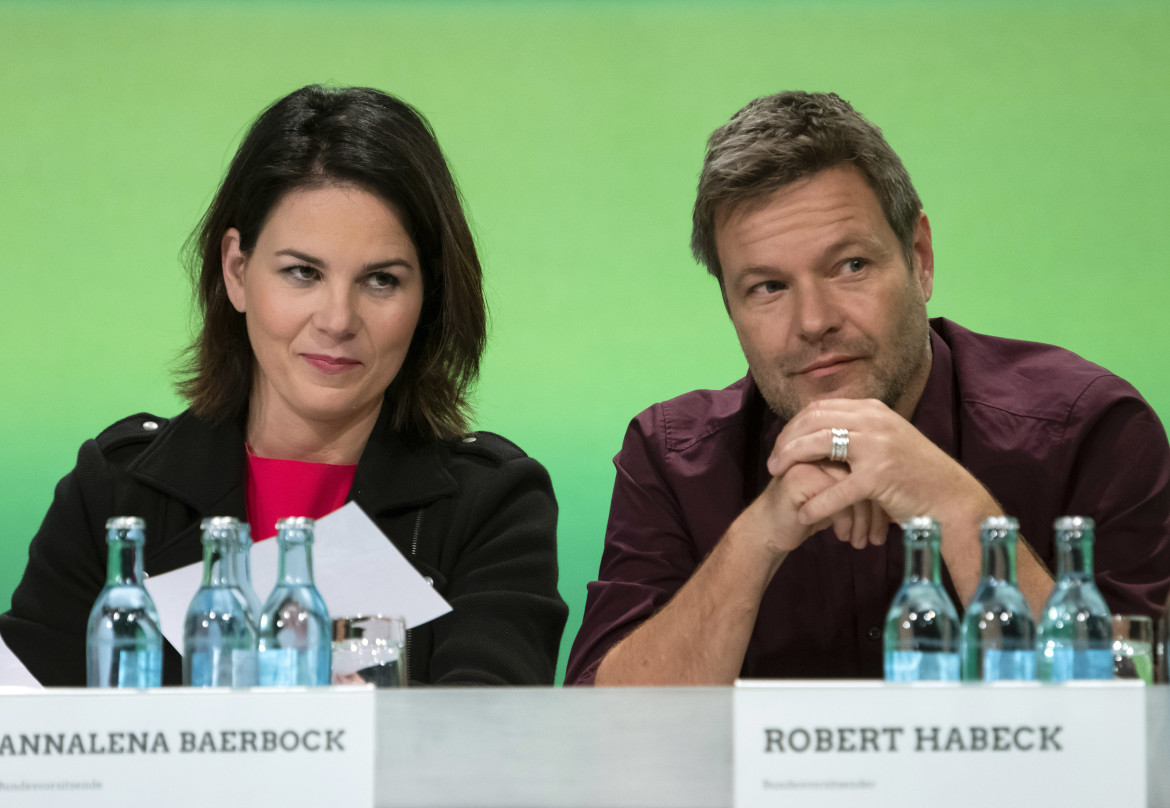Commentary
There was once a German Green party
Terrified by a possible return to the grand coalition between the SPD and CDU-CSU, which would exclude them, the Greens, under the illusion of capturing bad popular moods, are trying their hand at an opportunistic realism subordinate to Germany's raging rightward drift.

The Grünen had their congress this past weekend under the banner of the dumbest-sounding motto imaginable: “Our ideology is called reality.” Green Vice Chancellor Robert Habeck, the alleged author of the motto and a renowned grasper at straws, would be well advised to remember that when you make an ideology out of reality, that’s when you abandon reality itself. When “realism” becomes a fetish, it becomes irreparably detached from concrete life.
From their origins, the German Greens have been marked by the dispute between fundamentalists (originally bordering on fanatical purism) and realists (in a long transition from common sense to opportunism). But now, with the final victory of the latter, all that remains of that conflict is a lifeless pantomime used to defend the many compromises the party accepted in order to stay in government with the SPD and FDP, its many renunciations and unscrupulous course corrections.
But it’s not just a “realism” imposed by their allies. What the Grünen have committed to looks like a real change in appearance, thought and political function. So much so that the question “Who are the Greens and what are they still for?” is not so obvious to answer.
Reality – the non-ideological one – says that the Grünen are a party in decline, that many voters are abandoning it (the last election rounds went badly and the polls are not showing a turn for the better) and the base is in turmoil, that very little enthusiasm accompanies the doings of a party that has failed to adequately deal with the events that ran roughshod over its strategies and political principles: the wars, the energy crisis and migration.
The war in Ukraine led to their endorsement of Germany’s disturbing rearmament, even with some enthusiasm and an excess of rhetoric, and abandonment of all concern about the possible widening of the conflict, adopting Zelensky’s maximalism to the end. As for the party’s original pacifist credo, the Greens had long since cast it aside.
Then, the energy crisis led to a series of exemptions in favor of fossil fuels and nuclear power, and, most crucially, saw the Green leadership take a stand against the impressive environmental movement fighting to prevent the expansion of the already enormous Lützerath lignite mine (which, moreover, according to a number of experts, is unnecessary for the country’s energy needs).
Then, their agreement with the plan to tighten asylum rights and transfer migrants awaiting examination of their claims to third countries, as well as their adherence to the shameless fiction of “safe countries,” has completely reduced the Grünen to the lowest common denominator of the policies of closure and refoulement that are reigning supreme in the competition of the large popular parties among themselves and with the far right.
The Greens’ ideology, summed up by the ridiculous slogan “Humanity and order,” says that this is the only way to make the far right lose ground and support. Reality, on the other hand, shows that the fascist wave is growing undisturbed and that the whitewashing – albeit in moderate and rhetorically democratic terms – of its topics and watchwords enshrines a new normal that works in its favor.
In the end, what the Greens claim they have achieved by stooping to these many compromises (such as abandoning the promise of early exit from fossil energy) is overall unconvincing.
But what made the Greens “different” in the first place? What made them an alternative to other parties? What made them appealing even to a fragmented left which no longer has any class connotations?
It wasn’t only (or not so much) the fact that they were promoting the crucial issue of the environment, which proponents of quantitative development on the right and left were ignoring or setting aside. It was also the close relationship with a vast network of grassroots movements and initiatives that not only fueled the great pacifist and ecological campaigns, but also built, on the basis of a clear ecological sensibility, paths, projects, forms of life and enterprise that are alternative to the dominant models.
Over the years, it was precisely this relationship that first weakened and then broke down politically, albeit managing to preserve itself at times through patronage. The party leadership is rejecting interference and pushes from the grassroots with increasing irritation. And the election data testifies to the resulting dissatisfaction.
Today, the Grünen leadership is flaunting a “realism” that is supposed to avert the risk of ending up locked in a “niche,” only managing to stop the long march towards the status of the third-largest popular party – a goal now far more within the reach of the AfD, at 20 percent in the polls, than of the declining Grünen.
But the party’s real “niche” is none other than the self-referential “vocation for government,” which claims, against all evidence, that it can use the art of compromise to take effective action against the spread of the far right, which stands ready to take advantage of every step backwards and weakness of moderate positions to carve out new space for itself.
Terrified by a possible return to the grand coalition between the SPD and CDU-CSU, which would exclude them, the Greens, under the illusion of capturing bad popular moods, are trying their hand at an opportunistic realism subordinate to Germany’s raging rightward drift.
To remain in government whatever the cost is the imperative of the Green version of “reality.” But the more its rootedness in a critical and dissatisfied society shrivels away, the more difficult it will be to retain the strength necessary to even maintain its current standing.
Originally published at https://ilmanifesto.it/cerano-una-volta-i-verdi-tedeschi on 2023-11-28
